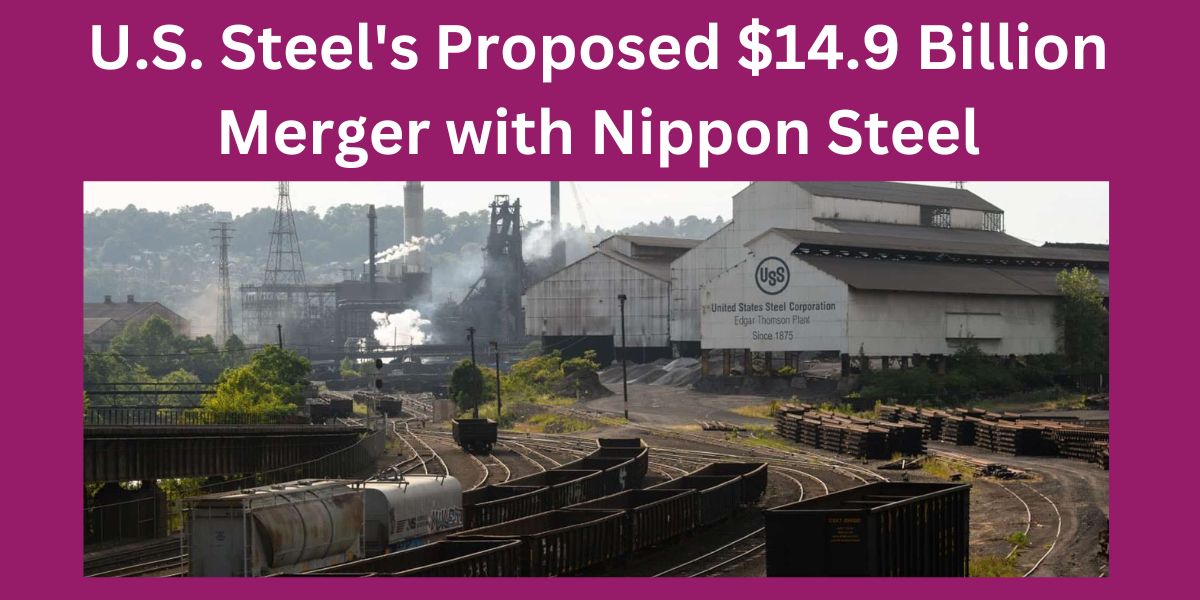The steel industry is on the brink of a major shift, with U.S. Steel’s proposed $14.9 billion merger with Nippon Steel. This massive deal is making waves and raising questions about its impact on the global market. In this article, we’ll break down the details of the merger, explore its potential effects, and answer your burning questions about what this means for the steel industry.
What Is the U.S. Steel-Nippon Steel Merger?
The Basics of the Deal
U.S. Steel, one of America’s oldest steel producers, has proposed merging with Japan’s Nippon Steel, a giant in the global steel market. The deal is valued at a staggering $14.9 billion. But why are these two steel titans joining forces?
Why Merge?
In a nutshell, the merger aims to create a more competitive entity in the global steel industry. By combining their resources and expertise, both companies hope to leverage economies of scale, expand their market reach, and innovate in ways that they couldn’t do individually.
The Strategic Importance of the Merger
Strengthening Global Presence
For U.S. Steel, the merger is a strategic move to strengthen its position on the global stage. Nippon Steel’s established international presence will help U.S. Steel gain access to new markets and customers around the world.
Innovation and Technology
Nippon Steel is known for its advanced technology and innovative steel production techniques. By merging, U.S. Steel will benefit from these advancements, which could lead to new product offerings and improved efficiency in production.
Cost Efficiency
One of the key benefits of mergers and acquisitions is cost efficiency. The combined entity is expected to streamline operations, reduce redundancies, and achieve significant cost savings. This can translate into more competitive pricing and better margins for both companies.
Potential Challenges of the Merger
Regulatory Hurdles
Mergers of this magnitude often face scrutiny from regulatory bodies. The U.S. Federal Trade Commission (FTC) and Japan’s antitrust authorities will closely examine the deal to ensure it doesn’t stifle competition or harm consumers.
Cultural Integration
Merging two large corporations also means blending two different corporate cultures. U.S. Steel and Nippon Steel will need to address potential cultural clashes and ensure smooth integration to avoid internal conflicts and inefficiencies.
Impact on Employees
Any major merger raises concerns about job security. Employees of both companies may worry about potential layoffs or changes in job roles. The companies will need to manage these concerns carefully to maintain morale and productivity.
Economic Impact of the Merger
Effects on the Steel Market
The merger will likely shake up the global steel market. With a combined production capacity, the new entity could influence steel prices and availability. This might be good news for some industries that rely on steel, but it could also lead to increased prices for consumers.
Implications for Competitors
Competitors will also feel the impact of this merger. Other steel producers will need to adapt to the new market dynamics, potentially leading to further consolidation or strategic shifts within the industry.
What This Means for the U.S. Economy
Job Creation and Loss
While mergers can lead to job losses due to overlapping positions, they can also create new opportunities in other areas. For example, the merger might lead to new projects and investments that could generate jobs in related sectors.
Investment in Infrastructure
The combined company might invest more in infrastructure projects, which can have a positive ripple effect on the economy. This could include improvements in manufacturing facilities, technology upgrades, and more.
How the Merger Affects Consumers
Price of Steel Products
The impact on steel prices will be one of the most closely watched aspects of the merger. If the combined entity can operate more efficiently, it might keep prices stable or even reduce them. However, there’s also the possibility of price hikes if market control increases.
Availability of Steel
With a larger production capacity, the merged company could potentially improve the supply chain and make steel more readily available. This is good news for industries that rely heavily on steel for production and construction.
Future Prospects for the Steel Industry
Innovation and Growth
The merger might spark new innovations in steel production and usage. As the industry evolves, we can expect to see advancements in materials and processes that could revolutionize various sectors.
Increased Competition
The merger will likely lead to increased competition within the steel industry. Other companies will need to up their game, potentially leading to better products and services for consumers.
Conclusion
U.S. Steel’s proposed $14.9 billion merger with Nippon Steel is a monumental move that could reshape the global steel industry. While there are potential challenges, including regulatory hurdles and cultural integration, the merger also presents exciting opportunities for growth, innovation, and improved efficiency. As the deal progresses, it will be fascinating to see how it unfolds and what it means for the future of steel production and consumption.
FAQs
1. Why are U.S. Steel and Nippon Steel merging?
The merger aims to strengthen their global presence, leverage economies of scale, and drive innovation in the steel industry.
2. How will the merger impact steel prices?
The merger could potentially stabilize or reduce steel prices due to increased efficiency, but there’s also a risk of price hikes if market control strengthens.
3. What are the potential risks of the merger?
Risks include regulatory scrutiny, cultural integration issues, and potential job losses. Both companies will need to address these challenges carefully.
4. How might the merger affect consumers?
Consumers might see changes in steel prices and availability. The merger could lead to either more stable prices or higher costs depending on how market dynamics shift.
5. What are the future prospects for the steel industry after the merger?
The merger could lead to increased innovation, growth, and competition within the steel industry, potentially benefiting both producers and consumers.










